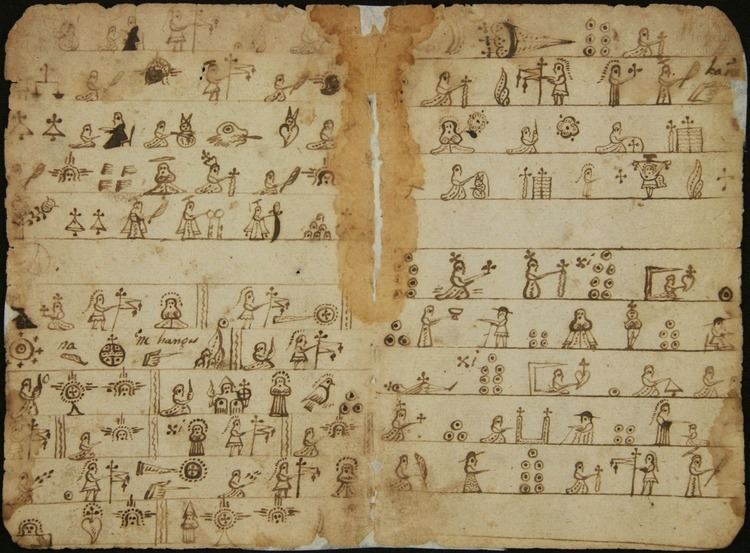Originally published 1524 | ||
 | ||
The Testerian catechisms (Spanish: Catecismos testerianos) are religious documents used in the evangelization of the New Spain. They explain the Catholic doctrine through images based on indigenous conventions prior to the Conquest of Mexico and western Spanish writing and other languages. These documents were an attempt to be educative materials for those religious that did not know the aboriginal languages then spoken in the territory that is now Mexico. They received their name for Jacobo of Testera, franciscan friar that elaborated catechisms of this type.
Context
The religious that participated in the evangelization of the new lands of the American continent looked for all ways of pedagogical resources for the transmission of the new doctrine. The Mesoamerican images and the documents were subjected to the destruction for being considered idolatric materials, but was tolerated when they were used in a religious context. Theatrical representations, music, architecture, public sermons, among others, that supported the understanding of new religious precepts. The Testerian catechisms were used for the transmission of the Ten Commandments, and prays like the Lord's Prayer (the case of Testera) and the Hall Mary.
